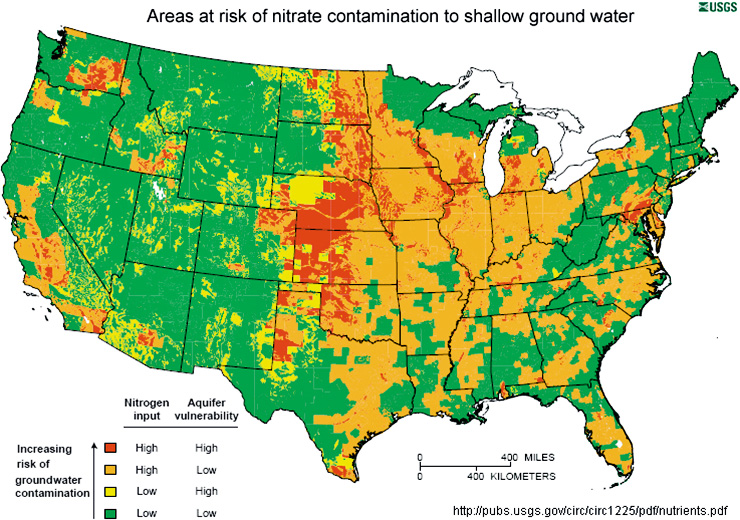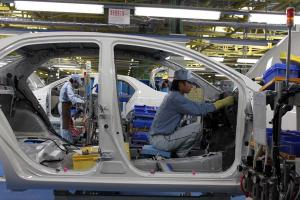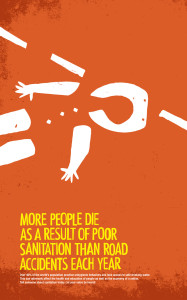
Many areas of the United States are at risk for nitrate and nitrite contamination of drinking water due to overuse of agricultural fertilizers. Click to enlarge.
Image: USGS
Researchers have found a catalyst that can clean toxic nitrates from drinking water by converting them into air and water.
“Nitrates come mainly from agricultural runoff, which affects farming communities all over the world,” says lead study scientist Michael Wong, a chemical engineer at Rice University.
“Nitrates are both an environmental problem and health problem because they’re toxic. There are ion-exchange filters that can remove them from water, but these need to be flushed every few months to reuse them, and when that happens, the flushed water just returns a concentrated dose of nitrates right back into the water supply,” he explains.
Wong’s lab specializes in developing nanoparticle-based catalysts, submicroscopic bits of metal that speed up chemical reactions. In 2013, his group showed that tiny gold spheres dotted with specks of palladium could break apart nitrites, the more toxic chemical cousins of nitrates.


 Urban air pollution in the U.S. has been
Urban air pollution in the U.S. has been 

